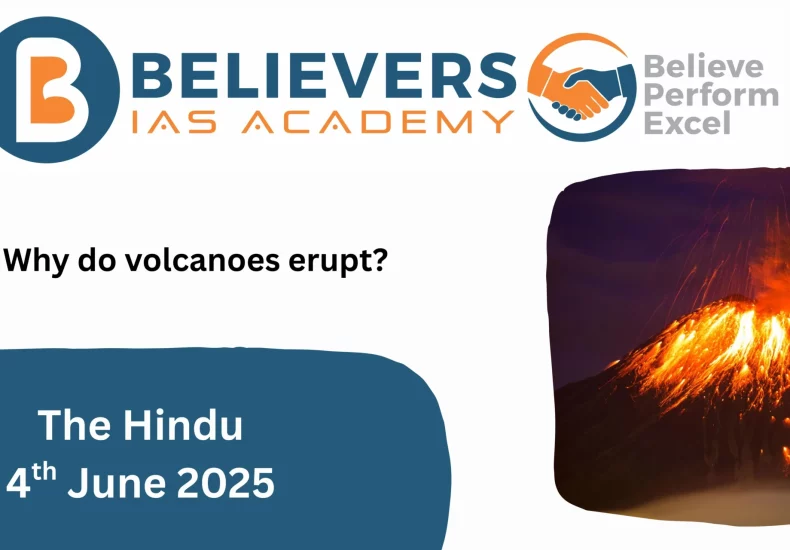Context
This text explains how magma varieties beneath the Earth’s floor, how volcanic eruptions happen, and discusses current findings about Bolivia’s dormant Uturuncu volcano.
Formation of Magma: Excessive temperature and stress deep inside the Earth soften components of the mantle and crust to kind magma, a molten rock.
- Magma is much less dense than surrounding strong rock, so it rises upward and collects in subterranean reservoirs.
Fuel Stress and Magma Motion
- Magma accommodates unstable compounds like water vapour, CO₂, SO₂, which stay dissolved below excessive stress.
- As magma ascends, the stress drops, permitting gases to kind bubbles — much like a fizzy drink when opened.
- These bubbles improve inside stress, contributing to the explosive nature of volcanic eruptions. Eruption Mechanism
- Eruptions typically happen at tectonic plate boundaries or over mantle plumes the place crustal fractures or faults
- Magma and gasoline surge via weak zones, and the fast drop in stress accelerates gasoline growth, inflicting an eruption of lava, ash, and gases.
- If magma motion is out of the blue blocked, the ensuing reverberations create low-frequency seismic waves, an indicator of volcanic exercise.
Forms of Volcanoes
- A volcano is taken into account energetic whether it is erupting now or is anticipated to erupt
- “Zombie volcanoes”, equivalent to Uturuncu in Bolivia, haven’t erupted in a very long time (2.5 lakh years on this case) however nonetheless emit gases and set off earthquakes, indicating ongoing subterranean exercise.
Latest Scientific Findings
- Scientists have used new methods to detect that gases are accumulating within the magma chambers beneath Uturuncu’s crater.
- Nevertheless, information counsel that an eruption is unlikely within the close to future, although the volcano stays below statement as a consequence of potential dangers.


Leave a Reply